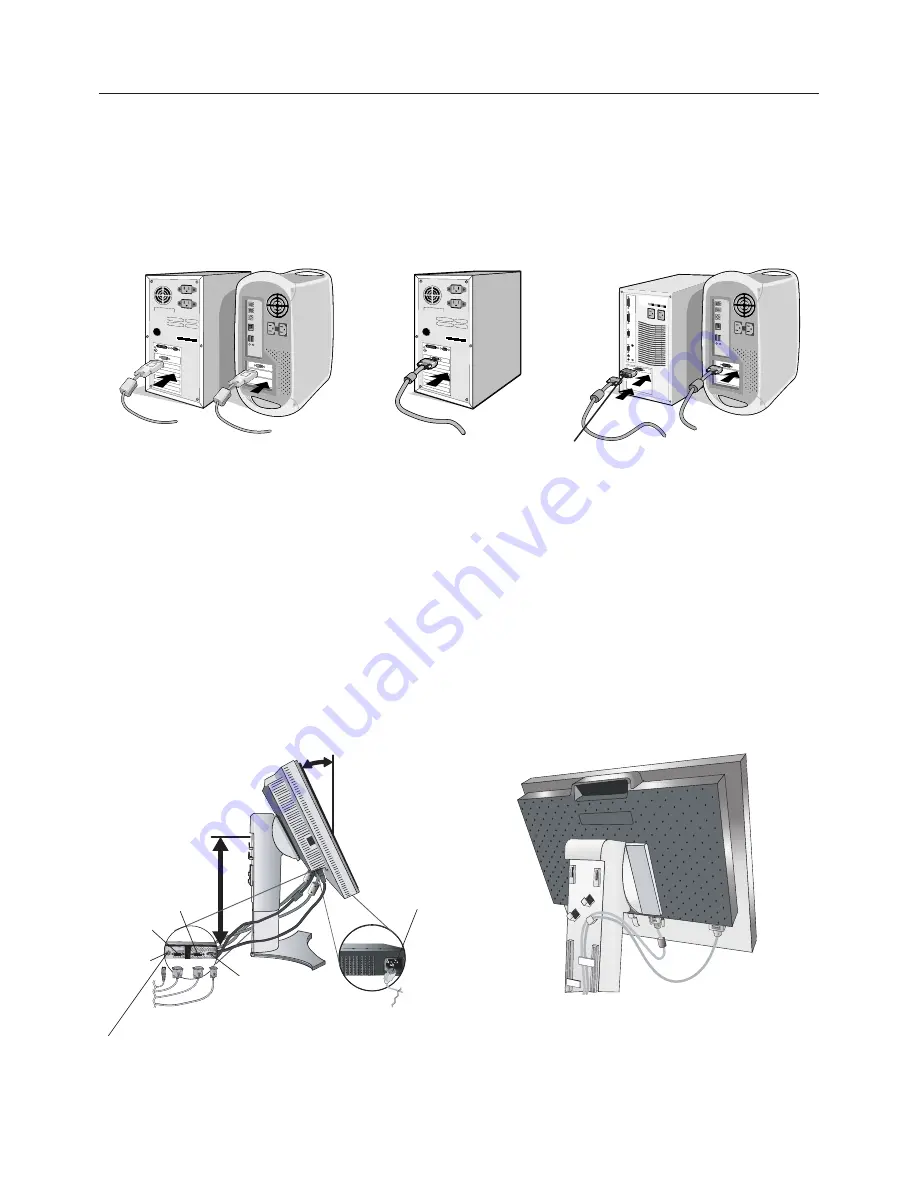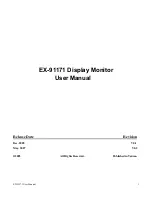
English-4
Figure C.1
Figure C.2
Highest
Stand
Position
Quick Start
To attach the LCD monitor to your system, follow these instructions:
1. Turn off the power to your computer.
2.
For the PC or MAC with DVI digital output:
Connect the DVI signal cable to the connector of the display card in your
system (
Figure A.1
). Tighten all screws.
For the PC with Analog output:
Connect the 15-pin mini D-SUB to DVI-A signal cable to the connector of the display
card in your system (
Figure A.2
).
For the MAC:
Connect the Macintosh cable adapter to the computer, then attach the 15-pin mini D-SUB signal cable to
the Macintosh cable adapter (
Figure B.1
).
NOTE:
Some Macintosh systems do not require a Macintosh cable adapter.
3. Place hands on each side of the monitor to tilt the LCD panel 30-degree angle and lift up to the highest position (
Figure C.1
).
4. Connect all cables to the appropriate connectors (
Figure C.1
).
NOTE:
Incorrect cable connections may result in irregular operation, damage display quality/components of LCD module
and/or shorten the module’s life.
5. To keep the cables neatly organized, place them into the cable management system that is built into the stand.
Place the D-Sub cable (not included) and the power cable into the specific hooks as indicated (
Figure C.2
).
Place the DVI cable and the 15-pin mini D-Sub to DVI-A cable into the hooks as indicated (
Figure C.3
).
When using the monitor in Portrait mode, place the DVI cable and the 15-pin mini D-Sub to DVI-A cable into the hooks as
indicated (
Figure C.4
).
6. Make sure all cables are resting flat against the stand (
Figure C.3
).
Please check Tilt, Rise and Lower monitor screen and screen rotation when you manage cables.
Figure A.1
Figure B.1
Macintosh
Cable Adapter
(not included)
Figure A.2
Power cord
30˚ Tilt
DC-OUT
DVI-D
DVI-I
D-SUB
NEC optional product attachment.
Do not use this connector unless specified.







































